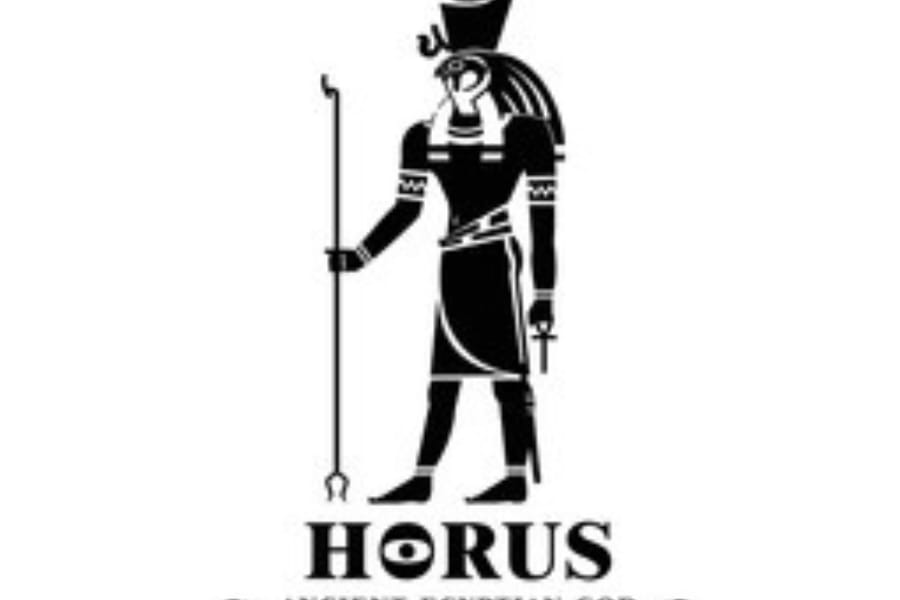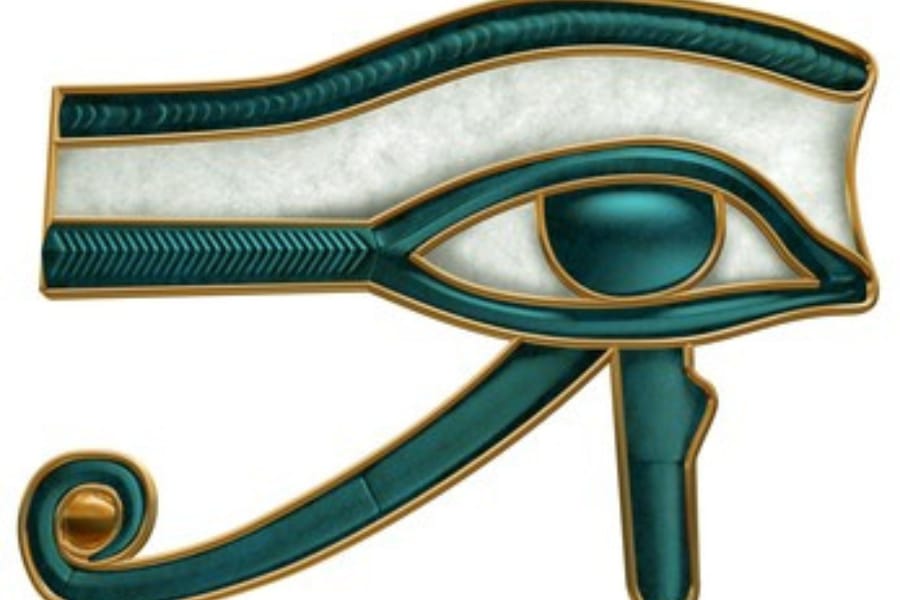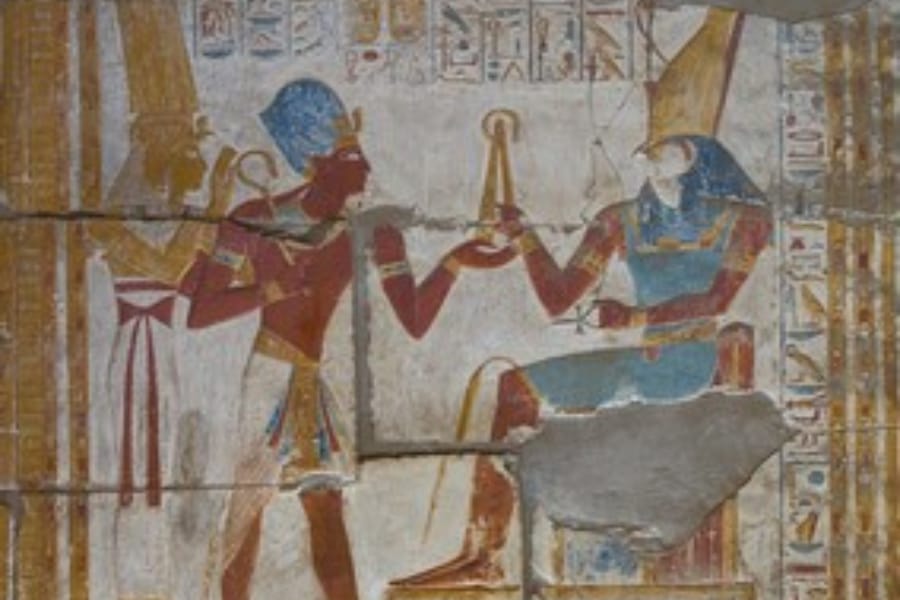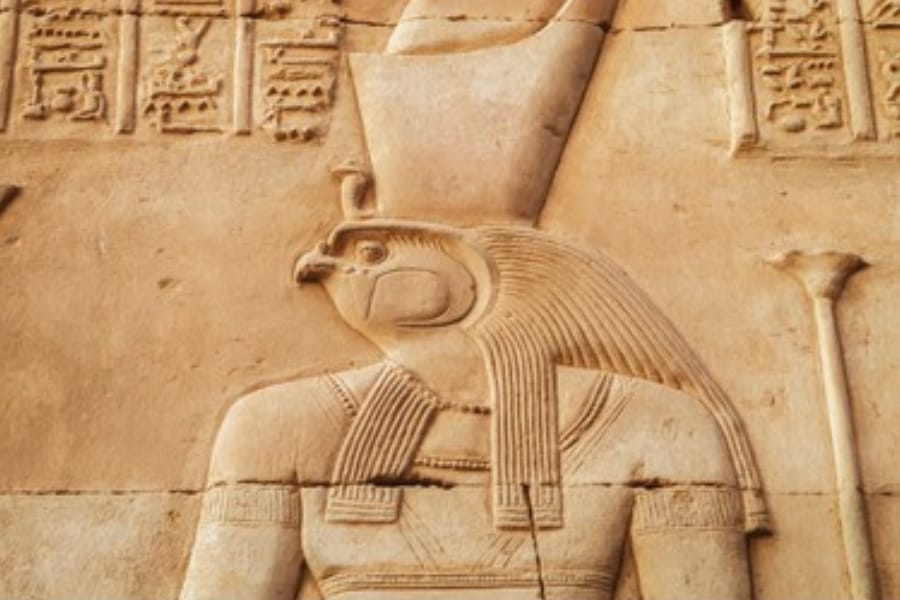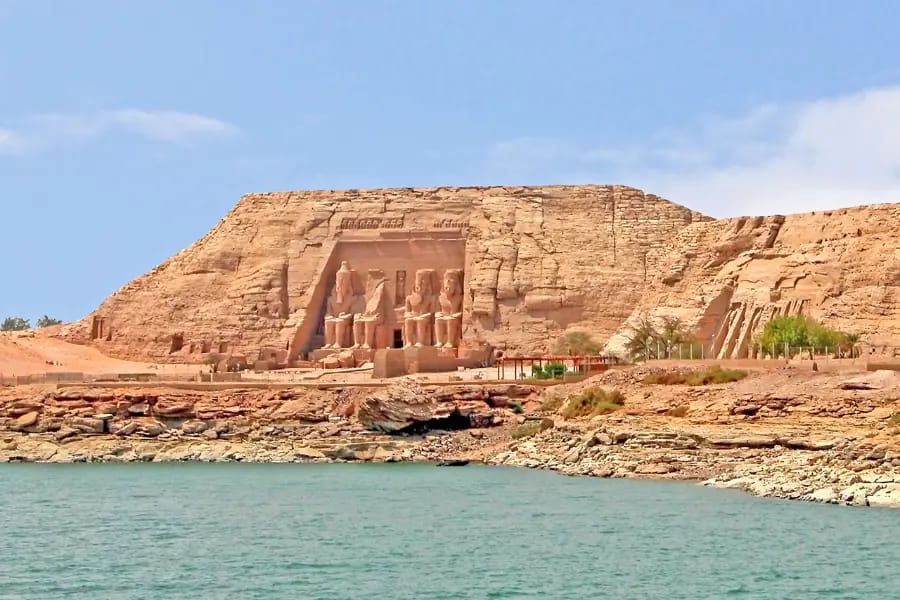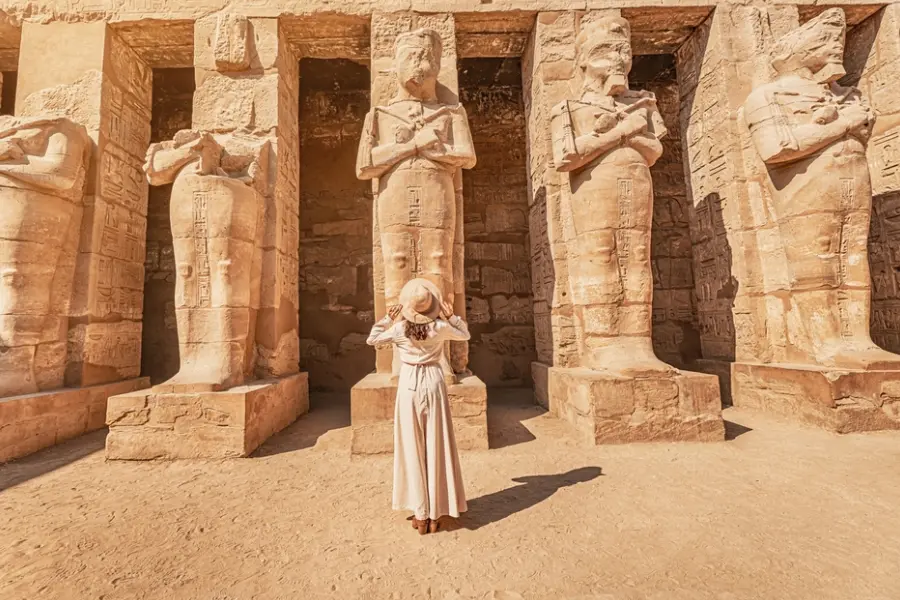Horus Egyptian God: Eye of Horus Meaning, Symbols & Myth
Who is Horus, the Egyptian god? Known as the falcon-headed deity, Horus wasn’t just a myth in ancient Egypt—he was a living symbol of kingship, unity, and divine protection. To Egyptians, every pharaoh was seen as the embodiment of Horus, ensuring the land’s strength and continuity.
Born to Isis and Osiris, Horus’s destiny was written from the start: to avenge his father Osiris against Set, the god of chaos. His battles weren’t just personal—they became symbols of justice and the eternal struggle between order and disorder.
Even today, Horus remains one of the most iconic gods of ancient Egypt. His image still adorns temples, and his story continues to echo Egypt’s resilience, strength, and spiritual heritage.
Key Takeaways
- Horus is one of the most significant Egyptian gods, symbolizing kingship, unity, and protection.
- Depicted as a falcon-headed deity, Horus was associated with the sky and the living pharaoh.
- He was the son of Isis and Osiris, born to avenge Osiris’s death and defeat Set.
- Ancient Egyptians believed each pharaoh was a living form of Horus, continuing his legacy on earth.
- Horus’s story embodies the eternal battle between order and chaos in Egyptian mythology.
The Birth and Lineage of Horus Egyptian God
Isis and Osiris—parents of Horus—are among the most important figures in Egyptian mythology. After Set murdered Osiris, Isis hid and protected her son until he grew strong enough to face his uncle and reclaim the throne. This early struggle shaped Horus into a champion of rightful rule.
Names and Variants of Horus
Ancient sources sometimes distinguish between Horus the Elder (Haroeris) and Horus the Younger (the son of Isis and Osiris who battled Set). You may also encounter Ra-Horakhty (“Horus of the Two Horizons”), a combined form linking Horus with the sun god Ra and the daily journey of the sun across the sky. These names reflect different roles—protector, avenger, and divine ruler—without changing the core identity of Horus, the falcon god associated with kingship and the sky.
Horus as a Symbol of Divine Kingship
When Horus Egyptian God, came of age, he defeated Set after a prolonged struggle. His triumph wasn’t just personal; it became a national symbol. Egyptians believed every pharaoh represented the “living Horus,” chosen to rule with justice, strength, and divine blessing. Horus thus embodied unity and legitimate kingship.
The Eye of Horus – Meaning & Modern Use
From antiquity to today, the Eye of Horus remains one of Egypt’s most recognized symbols. Born from the mythic conflict between Horus and Set—in which Horus’s eye was injured and later restored—the Eye signifies protection, healing, and restoration.
Ancient Egyptians wore the Eye as amulets, placed it in tombs, and painted it on boats for safe passage.
- Eye of Horus: protection, healing, restoration; often linked to the moon and the myth of the injured-then-restored eye (Eye of Horus meaning in practice is safety and wholeness).
- Eye of Ra: solar, fiery power and retribution; tied to the sun and Ra God’s forceful guardianship.
- Both are protective, but Horus’s eye leans toward health and balance, while Ra’s eye emphasizes power and punishment.
| Symbol / Aspect | Meaning |
|---|---|
| Eye of Horus (Left Eye) | Protection, healing, restoration, wholeness |
| Falcon (Horus) | Sky, vision, kingship, strength |
| Eye of Ra | Solar power and wrath (distinct from the Eye of Horus) |
What Does the Eye of Horus Symbolize?
Commonly identified as Horus’s “left” eye and linked with the moon, the Eye came to represent wholeness after injury, protection after danger, and healing after loss. Many traditions also associated parts of the Eye with senses and completeness—reinforcing its meaning as a sign of physical and spiritual well-being.
Eye of Horus in Today’s Culture
Today, the Eye of Horus is everywhere—from tattoos and jewelry to apparel and art. Some wear it as a good-luck charm; others value its spiritual resonance. Though it’s sometimes mixed up with the Eye of Ra, its protective, restorative nature stands apart. Either way, it remains a timeless, cross-cultural icon.
Horus and Set – The Epic Battle for Egypt
After Osiris’s death at the hands of Set, chaos spread through Egypt. Set seized the throne, but Isis raised Horus in secret to fight for justice. When Horus grew strong, he challenged Set for the crown.
What followed is one of Egypt’s most dramatic myths: a long contest of strength, magic, strategy, and shapeshifting. After years of conflict, the gods convened a divine tribunal to settle the dispute. Tests were made, arguments heard, and judgment finally rendered in favor of Horus, rightful heir to Osiris.
Why Did Horus Fight Set?
Set murdered Osiris and usurped his throne. The Egyptian god Horus vowed to restore his father’s kingship. Raised and prepared by Isis, he sought not personal revenge alone but the re-establishment of rightful order in Egypt.
The Trials and Final Victory of Horus
The conflict involved physical battles, magical contests, and lengthy trials. In one famous episode, Horus lost his “moon” eye—later restored and honored as a symbol of healing and protection. In the end, the gods declared Horus the rightful king, affirming the triumph of order over chaos.
Horus Symbols and Depictions in Ancient Egypt
Egyptian art and architecture frequently portray Horus as a powerful falcon or a man with a falcon’s head—signifying strength, kingship, and the sky. The Eye of Horus appears on amulets and carvings as a protective emblem linked to healing and insight.
| Aspect | Value |
|---|---|
| Common Form | Falcon or falcon-headed man |
| Key Symbol | Eye of Horus (protection & wholeness) |
| Royal Title | “Living Horus” for every pharaoh |
| Virtues | Justice, unity, lawful kingship |
Where to See Horus in Egypt Today (Traveler’s Note)
The best place to experience Horus’s legacy in person is the Temple of Horus at Edfu, one of Egypt’s most well-preserved sanctuaries. As you walk through the monumental gateway, look for the iconic granite falcon statues guarding the entrance and reliefs that depict Horus and Set in dramatic scenes of cosmic justice. Inside, inscriptions and carved panels reinforce Horus’s role in divine kingship and protection—making Edfu a perfect setting to understand the myth beyond the page. You’ll also find vivid representations of Horus at Kom Ombo (shared with Sobek) and Philae near Aswan, where temple reliefs and chapels highlight his protective presence. For a calmer visit and better photos, aim for early morning or late afternoon light.
Hieroglyphs and Iconography
Horus’s name is written in Hieroglyphs with the falcon sign and is closely tied to royal imagery. The Eye of Horus appears abundantly in amulets, jewelry, and temple reliefs, reinforcing its protective and restorative meanings.
Worship of Horus – Temples, Rituals, and Followers
In ancient Egypt, Horus was widely venerated, especially at Edfu. Rituals included daily offerings, incense, and reenactments of his mythic battles. Priests maintained temple rites, while festivals with processions, music, and prayers connected people to Horus’s strength and justice. Pharaohs were honored as the “Living Horus,” binding his worship to Egypt’s identity.
The Temple of Horus at Edfu
Built in the Ptolemaic period, Edfu is remarkably well preserved. Its towering gateways and detailed reliefs honor Horus as protector and avenger, and its sanctuaries served as focal points for ritual life celebrating his victory over Set.
Festivals and Worship Practices
Major festivals highlighted Horus’s triumph. Sacred processions, offerings, and music reaffirmed his role as Egypt’s guardian and the divine model of kingship.
Horus in Popular Culture and Modern Influence
Horus Egyptian God, continues to inspire films, books, games, and visual art. In fashion and spiritual circles, the Eye of Horus remains popular—often embraced for good fortune, protection, or inner healing. Modern comparisons sometimes link Horus with other solar or protective deities, but his story uniquely blends justice, rebirth, and victory over chaos.
Horus in Movies and Media
From modern films to video games, references to Horus and Egyptian mythology keep the legend alive for new audiences—often emphasizing his nobility, protection, and role in restoring order.
The Eye of Horus as a Spiritual Symbol Today
In contemporary spiritual practice, the Eye of Horus is often associated with protection, intuition, and balance. It appears in meditation, energy-work contexts, and personal talismans as a reminder of resilience and restoration.
Conclusion
Horus remains one of the most enduring figures in Egyptian myth. From his battle with Set to his role as a symbol of kingship and protection, Egyptian god Horus still resonates today. Whether carved on temple walls or worn as a modern amulet, he connects past and present—an enduring emblem of justice, order, and hope.
Ready to experience Egypt? Discover our curated
Egypt tour packages, or sail the Nile to see Horus’s symbols at ancient temples on our
Nile River cruises.
FAQ
Who are the parents of Horus?
Horus is the son of Isis and Osiris. After Osiris was killed by Set, Isis raised Horus in secret until he reclaimed the throne.
What does the Eye of Horus mean?
It represents protection, healing, and restoration. Thoth restored Horus’s injured eye, making it a symbol of wholeness.
Is the Eye of Horus the same as the Eye of Ra?
No. The Eye of Ra is tied to solar power and wrath; the Eye of Horus is associated with peace, health, and protection.
Why did Horus fight Set?
To avenge Osiris and restore rightful kingship. Their myth symbolizes the triumph of order and justice over chaos.
Where can I see depictions of Horus?
In temple reliefs across Egypt—especially at Edfu—where Horus often appears protecting the pharaoh and overcoming chaos.


